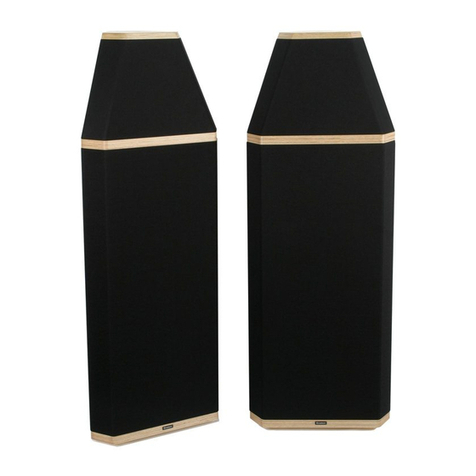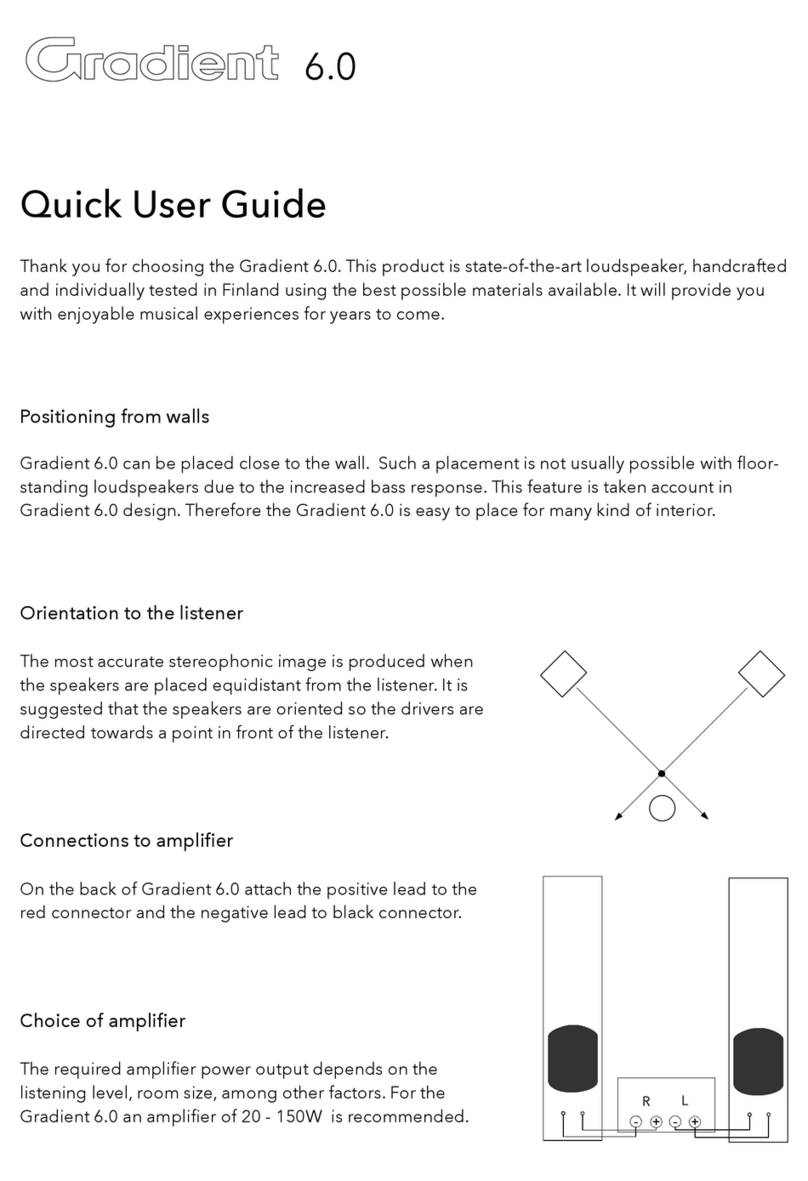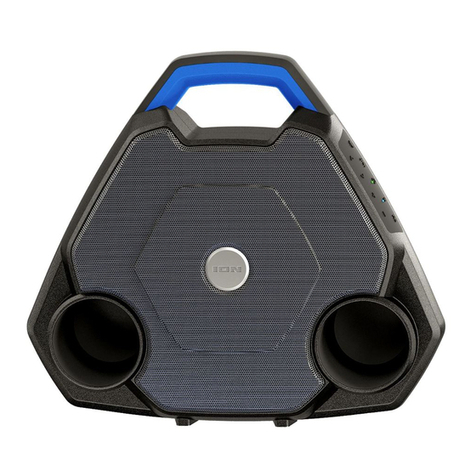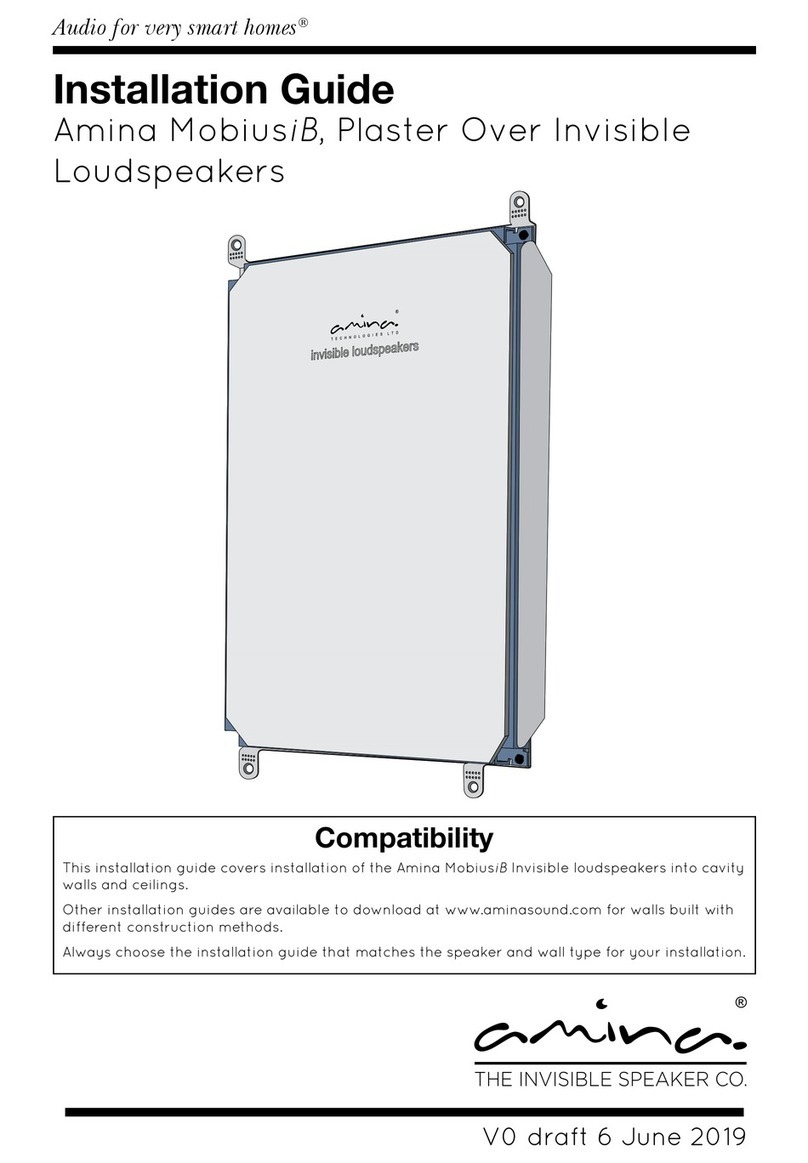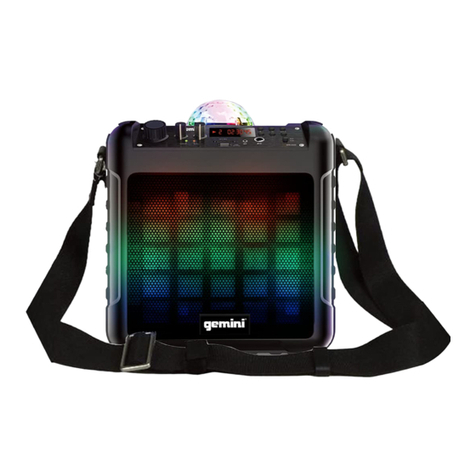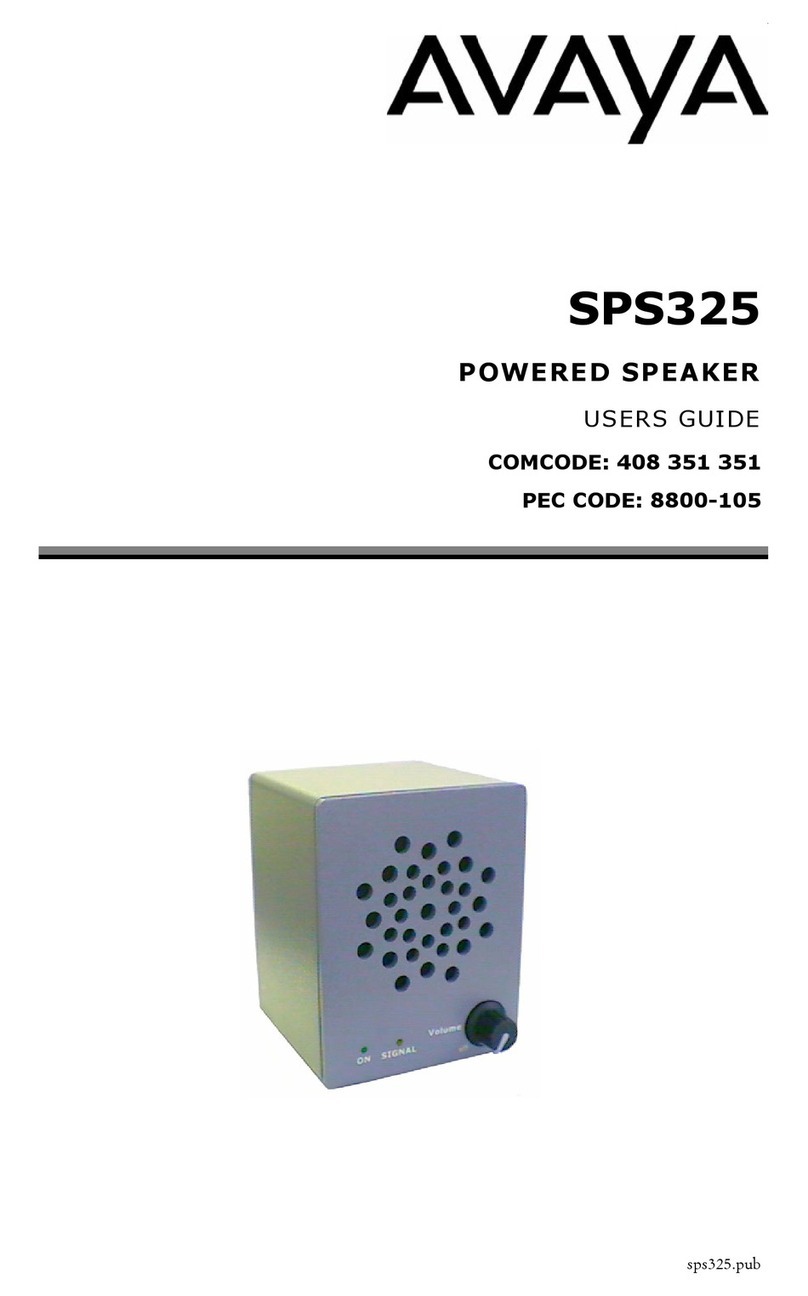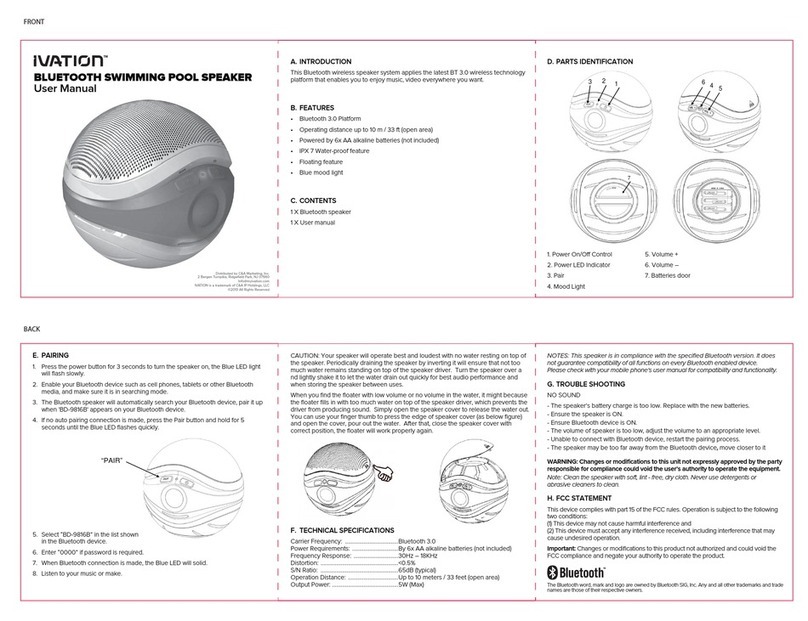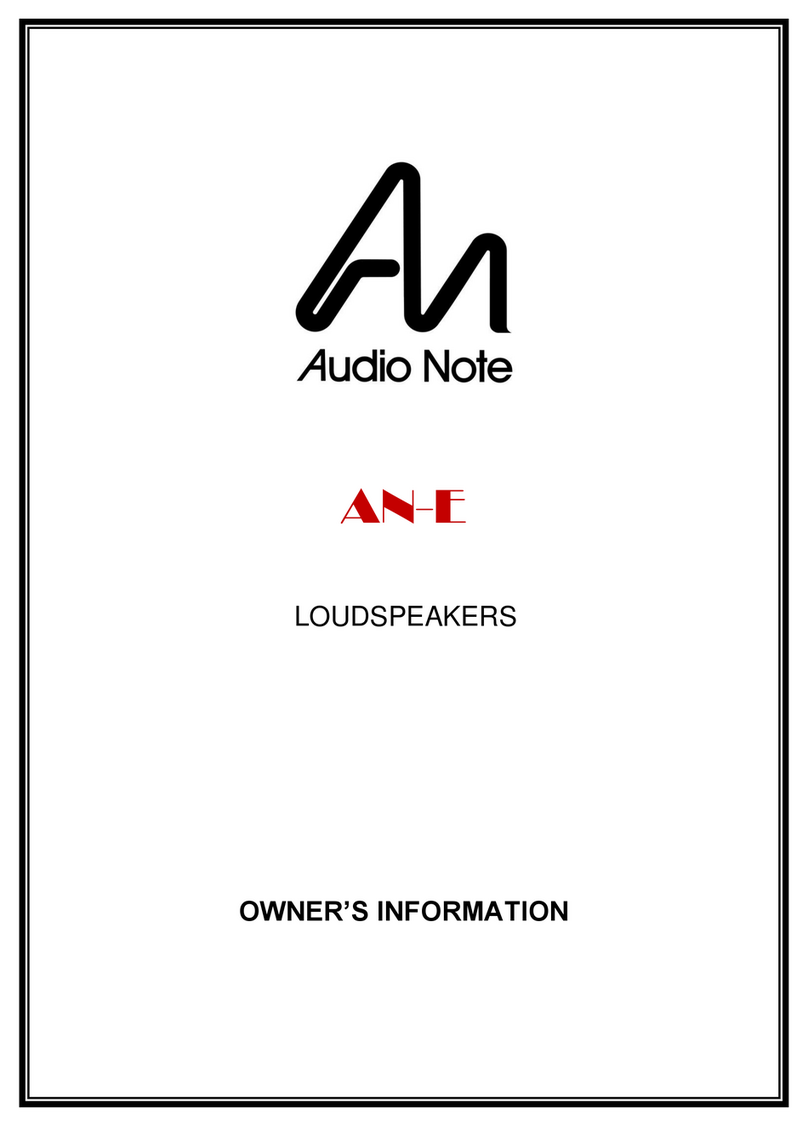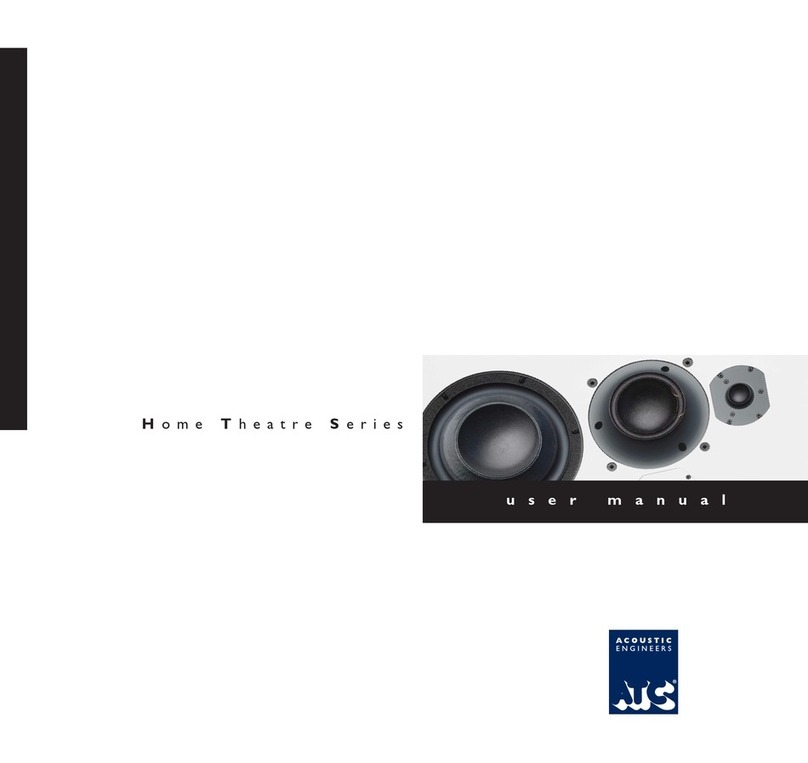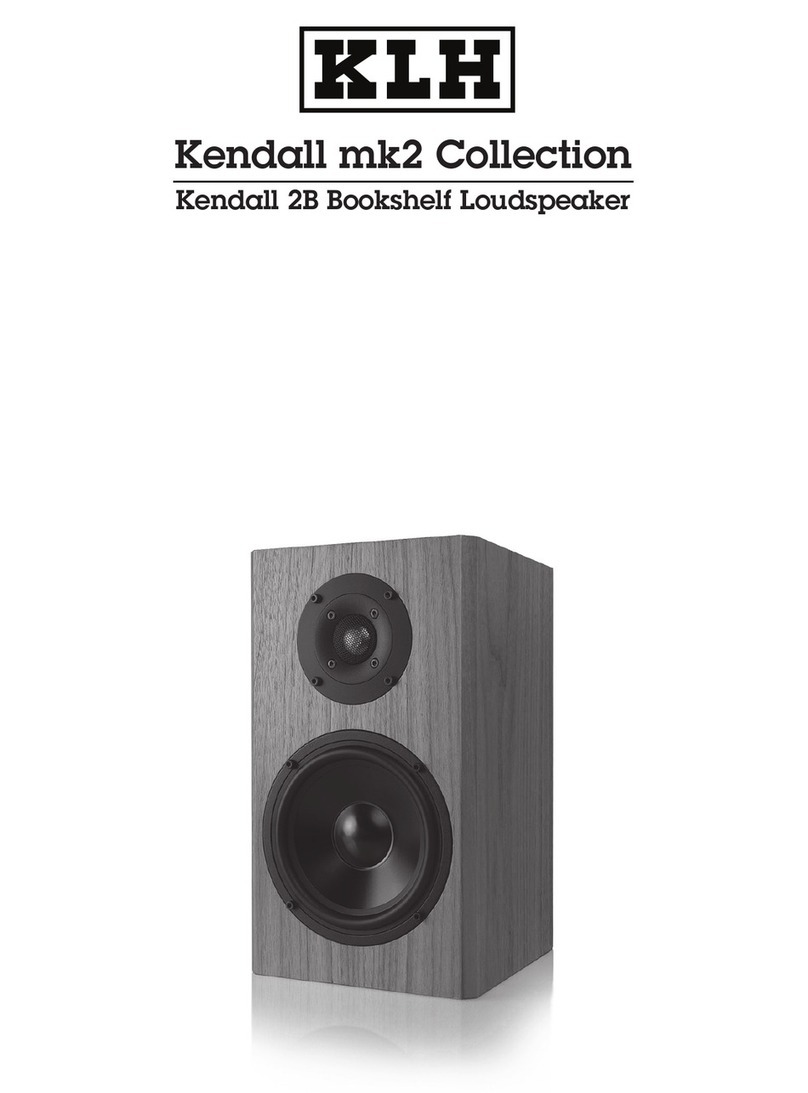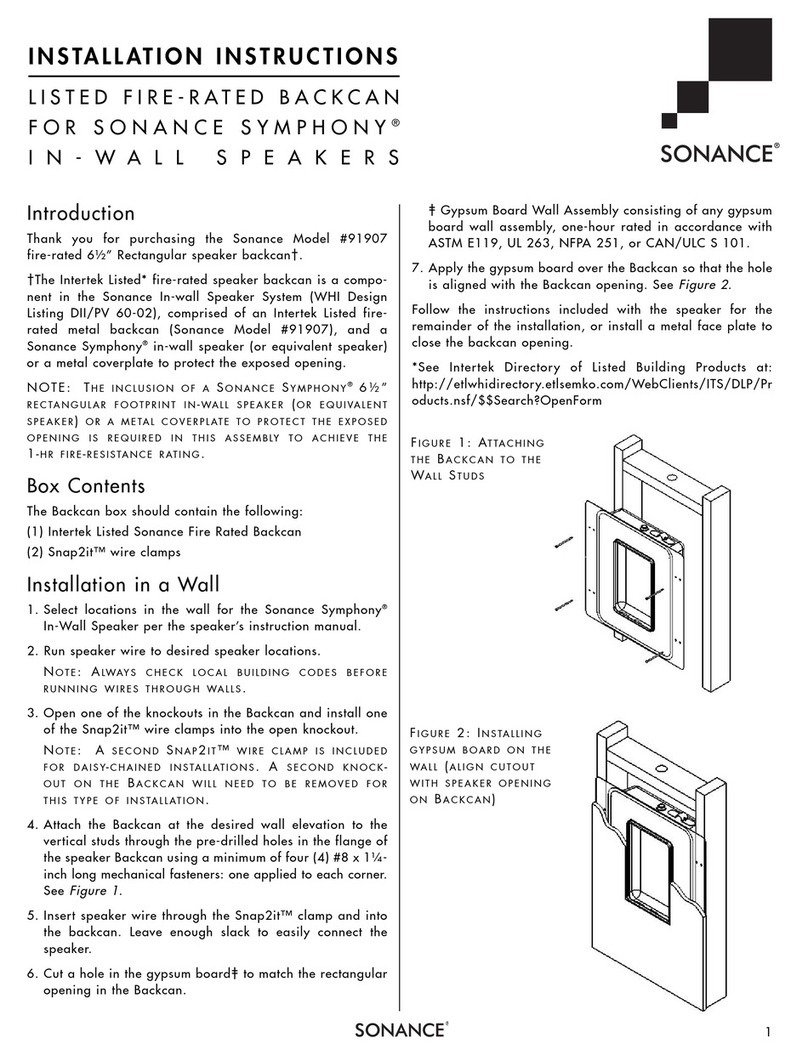Gradient Evidence User manual

EVIDENCE
USER GUIDE


GRADIENT EVIDENCE
Congratulations on your purchase of the Gradient
Evidence loudspeakers which represent the latest in
loudspeaker technology. The Gradient Evidence is
handcrafted and individually tested in Finland using the
best possible materials available. It will provide you with
enjoyable musical experiences for years to come.
We recommend you to read this manual entirely to fully
utilize the high performance capacity of your speakers.
1

POSITIONING
Each speaker is equipped with four adjustable feet with
nuts. Adjust the four feet in such a way that loudspeaker
stands steadily on the floor. Tighten the feet with nuts
using a 10mm wrench. If necessary, the adjustable feet
can be replaced by 6mm spikes.
Gradient Evidence loudspeakers can be positioned
against the wall or into the room. If there is any furniture
between the speaker and the listener only check that the
top part of the speaker can be seen from the listening
place.
The woofer is positioned on the side wall of the cabinet at
the height of 65cm (24'') from the floor. The speakers are
delivered in mirror image pairs. In a stereophonic layout
the woofers will stay either on the outer or the inner side
walls of the cabinet. Make sure that there is free space of
at least 30cm (12'') for the woofer to breath.
2

POSITIONING
The upper part of the Gradient Evidence is built into so
called Acoustic Resistance Enclosure. Such a design
eliminates the harmful backward radiation allowing to
place the speaker against the backwall. It is still
recommended not to position the speaker too close to
the side walls. Minimum distance between the speaker
and the side wall should not be less than 30cm. The low-
frequency response is strongly dependent on the speaker
placement and materials of the wall and floor.
Each boundary (floor, walls) boosts the low tones. A
corner of the room boosts most, the middle of the room
(only one boundary, floor) has much less effect on the
frequency response. By changing the distance between
the speaker and the walls, the bass level in the room can
be easily adjusted. The place of the listener in the room
has similar effect on the heard playback quality.
3

BASS LEVEL ADJUSTMENT
The Gradient Evidence is equipped with a three position
bass level adjustment. Correct level depends not only on
the placement of the speaker but also on personal taste.
The level of bass relative to the mid and high frequencies
is adjusted by the jumper near the terminals. In the
vertical position (H) the level of the bass is about 3dB
higher than inthe position (L). If the jumper is taken away,
the level of the bass remains as in the position (H) but the
level of the treble is increased giving a little bit brighter
sound.
4

CONNECTION TO THE AMPLIFIER
Gradient Evidence is equipped with two pairs of binding
posts which are located on the base of the speaker. The
red marked plus terminals are linked together by a
jumper. The black marked minus terminals are similarly
connected to each other. The speaker can be connected
in the normal way as single-wired, bi-wired or bi-amped.
· normal or single-wiring
Connect the positive or plus lead from the amplifier to
one of the red binding posts of the speaker. In the same
way connect the ground lead or the negative lead from
the amplifier to one of the black binding posts. Connect
both speakers in the similar way. Check that the jumpers
between the similar binding posts are connected and
tightened.
· bi-wiring
For bi-wiring remove the jumpers between the binding
posts. Bi-wiring requires two pairs of loudspeaker cables
in parallel between the amplifier and the speaker. One
speaker cable drives the bass (LF+ and LF-) and the other
the midrange & treble of the speaker (HF+ and HF-).
5

CONNECTION TO THE AMPLIFIER
· bi-amping
In this case the speakers are driven by two amplifiers.
One amplifier drives the bass part and another the
midrange & treble part of the speakers. Disconnect the
jumpers between the binding posts. Connect the leads
from the bass amplifier to the binding posts marked LF+
& LF-. Connect the leads from the midrange & treble
amplifier to the binding posts marked HF+ and HF- (both
speakers similarly). The bi-amping enables further bass
level adjustment if one of the power amplifiers is
equipped with volume control.
Attention: If the amplifiers are not similar, check the
phasing between the amplifiers. This can be checked by
driving one loudspeaker with one amplifier (only one
channel in use) and the other loudspeaker with another
amplifier (only one channel in use). If sound is in-phase,
connect as usually. If the sound is out-of-phase, connect
the loudspeaker leads to one amplifier in reversed order
(positive lead to minus terminal and negative lead to plus
terminal; both channels similarly).
6

THE CHOICE OF AMPLIFIER AND CABLES
The amplifier power output needed depends on the
listening level, the size of the room and many other
factors having influence on the room acoustics. It is
recommended to use an amplifier of 2 x 50W … 250W / 8
ohms with Gradient Evidence. Also higher powered
amplifiers can be used with caution due to their increased
potential for speaker damage.
We recommend to use thick enough cables to ensure
minimal signal losses in transfer from the amplifier to the
loudspeakers. A minimum thickness of 1.5mm2is
recommended for the speaker cables of five metres or
shorter. If the cable length exceeds five metres a thicker
cable is recommended.
7

POWER HANDLING
The efficiencies of Hi-Fi loudspeakers are well under 1%
(typically under 0.2%). This means that over 99
percentage of all power produced by the amplifier will be
converted into heat in the loudspeaker. Excessive heat
may give rise to the over heating of crossover
components and driver voice coils. When the power
handling capability of the speaker is exceeded it is likely
that the tweeter voice coil wound of a very thin wire will
be burnt first.
A loudspeaker can be damaged also by low powered
amplifier when over-driven (loaded). In this case the
amplifier will clip and cause high ordered distortion
components (high notes) which easily burn the treble
driver voice coil.
Gradient Evidence loudspeakers can handle high
powered peaks of short duration. Music of varying
dynamics can be listened to at a high volume level. If the
music sounds continuously loud and it is played for a long
time, it is probable that the heat builds up faster than the
drivers can dissipate it. As a result the speaker drivers can
be damaged.
8

A BRIEF DESCRIPTION OF TECHNOLOGIES
· bass reflex system at low frequencies
Low frequencies below 200Hz are reproduced by bass
reflex enclosure tuned at 27Hz. The Evidence is equipped
with a bass level adjustment. This is a very useful feature
allowing the listener to adjust the best sounding bass
level which depends not only on the positioning of the
speakers but also on personal taste.
· acoustic resistance enclosure at mid frequencies
Frequencies higher than 200Hz are reproduced by the
top part of the speaker. It employs a coaxial midrange &
treble driver which is a virtual point source. The main unit
is a 176mm glass-fibre coned driver which receives its
radiation characteristics from an acoustic resistance
enclosure. Thanks to the cardioid radiation patter the
speaker radiates frequencies over 200Hz mainly to the
forward direction. The backward radiation is dampened
most effectively being in power only one percentage of
the forward radiation. Unwanted reflections from the
nearby boundaries will be minimized and the midrange
will sound clean without colourations.
9

A BRIEF DESCRIPTION OF TECHNOLOGIES
· acoustic waveguide at high frequencies
The aluminium dome tweeter placed at the apex of the
cone uses midrange diaphragm as a waveguide to
control treble dispersion. The resulting radiation pattern
at high frequencies is therefore very similar to that of the
cardioid midrange. Of course the tweeter is equipped
with a voice coil/ magnet system of its own.
· a point source at mid & high frequencies
A point source is generally accepted as an ideal sound
source. It enables excellent frequency response and
phase properties over a wide listening window. The result
of this will be stable and accurate stereo picture with
good three dimensionality. The quality of a recording will
be easily discovered.
10

TECHNICAL SPECIFICATIONS
Model: Gradient Evidence MK IV
Loading principle: Bass: Bass reflex
Midrange: Acoustic Resistance
Enclosure
Radiation Patterns: sphere (bass), cardioid (midrange
& treble)
Frequency Response: 45 … 20000Hz +/-2dB, 29Hz -6dB
Impedance: 4 ohms
Sensitivity: 86dB / 2.83V / 1m
Recommended
amplifier power:
50W … 250W
Drivers: Bass: 1x200mm long throw woofer
Midrange: 176mm fibreglass
Treble: 25mm aluminium dome
Crossover
frequencies:
200Hz and 2800Hz
Connections: Two pairs of binding posts
Dimensions (WHD) 210 x 1000 x 300mm
Weight: 22.5kg
11

QUALITY CONTROL
Gradient loudspeakers are manufactured from high
quality materials and components. The performance of
the drivers used have been tested before the assembly.
After the assembly a precision measuring system ensures
that all speakers are of a similar high standard. The
inspection marking and the serial number are located on
the inner wall behind the terminals.
Made in Finland
Gradient Labs Ltd. Kisällintie 8 FI-06150 Porvoo Finland
www.gradient.fi
COPYRIGHT © 2013 GRADIENT LABS. ALL RIGHTS RESERVED.
12


www.gradient.fi
Table of contents
Other Gradient Speakers manuals

